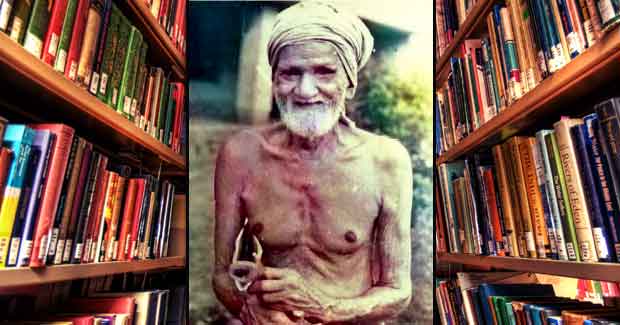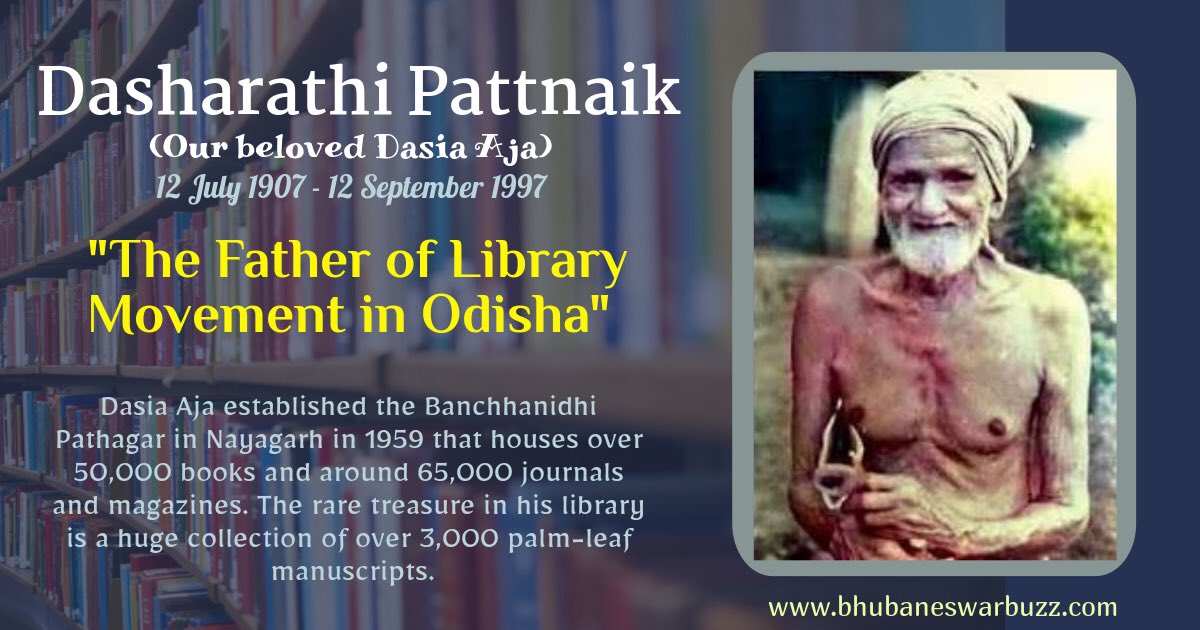Dasarathi Patnaik (Dasia Aja) can be rightly designated as the father
of library movement in Odisha. As his life’s only ambition and mission
was to create awareness among the people of our state regarding the
necessity of libraries.
Name- Dasharathi Pattanaik ( known as Dasia Aja)
Born- 12/07/1909
Death- 12/09/1997
Famous for - Father of Library movement in Odisha
Late Dasharathi Pattanaik was born on 12 July 1907 in a little known
village namely Udaypur in the district of Nayagarh. By his sheer will
power and sincere effort, he could be able to keep his footprint in the
literary and cultural fields of Odisha overriding the iron barriers of
little education, economic scarcity, and underdeveloped rural
atmosphere.
Instead of indulging his 90 years span of life in family affairs he
had preferred to include himself among innumerable elites, poets,
writers, bureaucrats and politicians of Odisha and in course of time had
become their beloved ‘Dasia Aja’ from Dasarathi Patnaik.
The seeds for a library were sown in his mind by his school teacher
and Dasia Aja set off with five books in a trunk. Fifty years old at the
time, he bequeathed his farmland to his wife and mother and traveled
across Odisha looking for books, magazines, antiques, and other
collectibles say his grandson Deepak Pattnaik.
Dasarathi Patnaik became an icon. His attire — a loincloth, his bare
chest covered by a shawl laid on the shoulder and a turban — became a
trademark. He traveled from place to place in quest of rare items and
materials. His mild and pleasant demeanor attracted everyone and soon he
was known to all as Dasia Aja.
The library holds more than 50,000 books, most of them old, rare
publications from across the world in different languages. It has more
than 65,000 magazines, periodicals, and journals and 2,500 backfiles of
newspapers.
The museum has sections on archaeology, natural history, numismatics,
armory, mining and geology, art and craft and anthropology. The museum
could be one of the handfuls of places in the world to possess original
stones from the moon. The stones take their place beside the treasures
of Mohenjodaro and Harappa in the shape of fragments of clay pottery,
toys and jewelry, a clay seal from the Mesopotamian era, bone of a
dinosaur, fossil of a rhinoceros and other archaeological excavations.
You also have soil from post-atom bomb Hirosimha in a wooden casket,
volcanic ash in a small urn, a floating rock that is believed to be part
of the mythical Ram Sethu.
A large number of silver, copper and metal coins dating from the
ancient, medieval and modern eras are on display. The museum has a
section on tribal lives sequencing a change in lifestyle through
clothes, jewelry, weapons, etc over a period of 100 years.

The crowning glory is, however, the collection of palm leaf
manuscripts and illustrations. There are over 5,000 manuscripts
depicting epics like Ramayana, Mahabharata along with treatises on
Ayurveda, religious rituals, astrology and astronomy, tantra and mantra,
veterinary treatment, and literature. There are 68 manuscripts that
depict narratives of the Dasavataar and the Krushna Leela through
colorful pictures that are etched on leaves.
All this was collected by one man. He didn’t have much formal
education (he dropped out of school in class six). But he developed an
addiction for reading and devoured whatever came his way.
Dasarathi Patnaik single-handedly put together the institutions and
transformed them into marvels. Dasia Aja is no more. He died in 1997 at
the age of 90. But he left behind a legacy which would educate and
enrich later generations.
Source- Incredibleorissa, Bhubaneswar Buzz

No comments:
Post a Comment